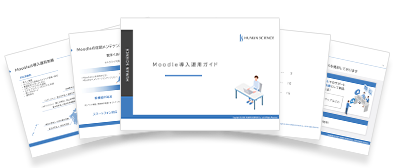2023.08.03
Moodle and IBT - Conducting Online Exams Using Waiting Room Functionality -

Currently, the onlineization of learning is progressing further. On-demand lectures, real-time lectures, surveys, and discussions are being conducted online using Moodle. The next step is the onlineization of exams. This is referred to as IBT (Internet-Based Testing), which means exams conducted via the internet. The challenges are ensuring identity verification and that the exams proceed smoothly. In this blog, we will introduce an example of a school that provided learning online but conducted exams in the classroom, and how they tackled the transition to IBT. First, let's talk about server downtime.
1. Server down?
Do you know the term "saba-ochi"? It refers to a "server down" situation. This is when the server's functionality has stopped due to overload from concentrated access or equipment failure. Have you ever experienced being redirected to a page that says, "Access is concentrated" during ticket sales? If you think you've connected, only to find that the tickets are already sold out, it might evoke uncontrollable emotions.
How was the ticket sales for the Olympics that created a buzz in Japan? Surely, many people are thinking, "It must have been tough to connect, even without the server crash." In fact, to avoid the issue of concentrated access, the official ticket sales site for the Tokyo 2020 Olympics implemented a "waiting room feature."
2. What is the waiting room function?
The waiting room function is a feature that directs users to other websites to wait when there are too many accesses to the system. This can be likened to a popular ramen shop where people wait in a long line. When all the seats in the shop are full, customers are asked to line up outside. As seats become available, people are guided into the shop in the order they lined up. Similarly, when the number of accesses to the system exceeds the limit (full capacity), users are directed to a virtual waiting room, and those waiting in line are guided to the system in order.
Users who are waiting are not just waiting. They can see their turn and the estimated waiting time on the waiting screen. By registering their email address, the system will notify them via email when their turn comes. Users can access the system through the URL in that email. It is mainly used on ticket sales and reservation sites where traffic is concentrated.
This blog introduces the services of Queue-it, which provides this waiting room feature (Headquarters: Copenhagen, Denmark. Established in 2010).
3. What is Queue-it?
Queue-it is a waiting room feature provided by Queue-it, a tool for controlling website traffic. If the traffic exceeds the website's processing capacity, Queue-it sends users to a virtual waiting line (queue). This helps to distribute the server load and improve the stability and performance of the website. It offers the following features:
・Manages a fair waiting queue. Users are processed based on first-come, first-served or specific priority rules, with strict controls to prevent fraud and skipping.
・Users in the queue are presented with a customizable waiting screen. This screen provides information such as their position and estimated wait time, and can be designed to align with the brand's image.
・Once users enter the waiting queue, they can receive notifications of queue completion through notification options (email or SMS). When the queue ends, users are automatically redirected and can enter the website.
・Real-time monitoring of queue status, wait times, and user numbers, providing detailed reports. This helps understand traffic trends and performance, aiding in future planning and optimization.
Queue-it is used for large-scale online events and sales sites. There are also examples of its use as a reservation site for vaccination appointments by local governments.Examples
4. Online Examination (IBT) Using Moodle and Queue-it
An online exam using Queue-it was conducted at a university. We will introduce an example of how it was implemented.
At this university, we have been conducting classes using an online learning management system based on Moodle, which was implemented school-wide before the COVID-19 pandemic. However, final exams required students to come to campus to take the tests. The university had been considering this for some time, and starting last year, we decided to conduct exams online. One concern was that when many students started the exam simultaneously, there could be a surge in system access, making it difficult for some students to connect and start the exam on time. Therefore, we prepared the Moodle server with anticipated simultaneous access in mind, and to avoid server downtime in case of higher-than-expected usage, we utilized the Queue-it waiting room feature.
To initiate this waiting room feature, we first set a limit on the number of students accessing the online exam, taking into account the specifications of the current system. If the number of accesses exceeds the limit, students will be directed to the waiting room (waiting screen). They will then be guided to the online exam on a first-come, first-served basis based on the access limit.
Students in the waiting queue are informed of their turn and estimated waiting time on the waiting screen. This waiting screen can be customized, allowing the university to display its logo and modify the content of the messages to be more understandable for the university.
Additionally, we have made it possible to receive notifications via email. Students will be asked to register their email addresses. Then, when they become eligible for entry while waiting, a URL for entry will be issued and notified via email. This way, students will no longer need to wait in front of their PCs. However, in reality, they did not have to wait long enough to receive an email.
The time limit for waiting students to enter the online exam has been set in hours. This allows students who do not enter within a certain time after their turn to be removed from the waiting room, enabling the next waiting student to enter.
The final exam conducted online for the first time was completed without confusion. Situations such as "unable to access" or "server crash" were avoided. After the exam, logs of actual access numbers and waiting times can be obtained, allowing the university to check usage and prepare for the next final exam.
5. Summary
The impact of the COVID-19 pandemic is gradually diminishing, but the online learning management system that was hastily introduced at first is now being utilized more and more effectively. Some universities have resumed in-person classes, but online classes continue as well, and hybrid classes are being conducted. The waiting room feature is one of the effective solutions for enabling online examinations. We have heard from universities about concerns regarding how to verify identity and prevent cheating. As a result, many services have started to emerge to address these issues. In the future, I hope to introduce those services on this blog. We will continue to work on providing a better online learning environment.
>Moodle Implementation Support and Operations
>Moodle Construction and Implementation Support Services
>Moodle Implementation Support Achievements
Moodle Implementation and Operation Guide

We explain the process of introducing and operating Moodle.
For the introduction and operation of Moodle, please leave it to Human Science, the official partner. We also introduce many achievements in Moodle implementation support.
Projects: Over 866
Companies, Schools, Organizations: Over 80 cases
Moodle Related Information
- 2025.10.29
- [Moodle Manual ⑤] 2025 Edition|Support Staff Explain How to Set Up and Utilize Groups/Groupings!
- 2025.10.28
- Can You Obtain Qualifications Through e-Learning? Examples of Qualifications and Their Benefits












